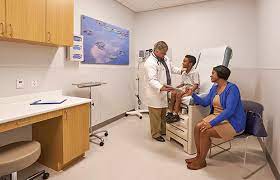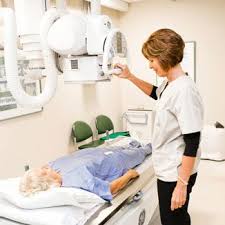Doctor’s Visit Tips: What to Bring, What to Ask, and How to Prepare
A regular doctor’s visit is an important part of staying healthy. It allows your doctor to screen for any health issues and ensure that you are following a healthy lifestyle. During a doctor’s visit, your physician will perform a physical exam which may involve taking your vital signs and measuring height, weight, and body mass index. Your doctor may also order lab tests or imaging studies if needed. Additionally, this is an opportunity for you to ask questions about any health concerns or medications you may be taking. Regular screening for sexually transmitted diseases (STDs) is also important during these appointments. By scheduling regular check-ups with your primary care provider, you can be proactive in maintaining optimal health and catching potential illnesses before they become serious. Please keep reading for details on the following topics:
When to visit the doctor
How often to see a doctor
Benefits of regular check ups
What happens during a doctor’s visit
The physical exam
Things to bring for a doctor’s visit

WHEN TO VISIT THE DOCTOR
Have new symptoms after a procedure, surgery, immunization or injection, or starting a new medicine (because it could be an early warning of a side effect or complication)
For routine health checks
Just found out about being pregnant
Dizziness or feeling faintish
Shortness of breath
Irregular heartbeats or rapid heartbeats.
Unexplained weight loss.
Fatigue that won’t go away
Severe sweating, especially cold sweats
Swelling in the ankles or legs
Rash along with a fever (100.4 C or higher)
A new or changing mole or other concerning skin change
Mental health issues
Cold becomes unusually bad or remains more than two weeks
A fever, muscle aches or other flu-like symptoms
Extreme difficulty swallowing
Severe chest, abdominal or pelvic pain
Change in bowel movement or urination
Bright flashes that interrupt one’s vision
Confusion or changes in one’s mood
Feelings of depression or sadness that don’t go away
Feeling extreme highs and lows
Having excessive fear, worry, or anxiety
Withdrawing from social interactions
Changes in eating or sleeping
Inability to cope with daily problems
Delusions or hallucinations
Thoughts of hurting oneself or others
Head injury with suspected concussion
Dizziness and balance problems
Nausea and vomiting
Confusion
Concentration and memory problems
Feeling sluggish or foggy
Sensitivity to light or noise
Sleep problems
Mood changes
Constant pain
Pain that spreads down one or both legs, especially if it goes past your knee
Pain with weakness, numbness, or tingling in one or both legs
Pain with swelling or redness on your back
Pain with a fever
Digestive issues
Signs of dehydration (very dry mouth or skin, fatigue, decreased urination, confusion, or irritability)

HOW OFTEN ONE CAN SEE THE DOCTOR
How often one routinely sees the doctor depends on their health, To allow them to catch diseases early and help manage them before they progress into more serious conditions
Routine checkups with the doctor are generally recommended as follows:
Once every 3 years if under the age of 50 and in good health
Once a year once one turns 50
Dermatologist 1 time/year
Obstetrician/Gynecologists (OB/GYN) 1 time/ year if over 21
Urologist 1 time/year if over 40
Gastroenterologist 1 time/ 10 years if over 50
Allergist Varies
Cardiologist 1 time/ 2-4 years if over 20
Dentist 2 times/year
THE BENEFITS OF REGULAR CHECK UPS
Finding potentially life-threatening health issues early before they cause a problem
Early treatment of health conditions, which increases the odds of a good outcome
Regular monitoring of existing health issues, which lowers the risk of worsening symptoms or severe complications
Staying up-to-date on vaccinations and screening tests
Limiting extra healthcare costs associated with treating complicated or serious conditions that aren’t caught early
Developing and maintaining an open, honest relationship with the primary care physician (PCP)
Learning new ways to live a healthy, longer life and improving your health
WHAT HAPPENS DURING A CHECK UP
During an annual checkup, the doctor will review past health history, evaluate one’s current health, and schedule appropriate screening tests
Medical history
Family history
Medication list and allergies
Vaccination and screening test history
Screening is done for
Obesity, based on body mass index
Tobacco use
HIV screening for adults ages 15 to 65 and anyone at high risk
Hepatitis C
Type 2 diabetes for anyone with risk factors or a family history
Colorectal cancer starting at age 50
Lung cancer with a yearly low-dose CT scan for adults ages 55 to 80 who currently smoke or have smoked within the last 15 years
Women
Intimate partner violence screening for women of childbearing age
A mammogram for breast cancer screening, between ages 50 and 74
A Pap smear for cervical cancer screening, between ages 21 and 65
High cholesterol screening, starting at age 45
Osteoporosis screening, starting at age 65
Men
Abdominal aortic aneurysm screening, from ages 65 to 75 with a smoking history
A prostate exam isn’t generally recommended, but may be done starting at age 50
High cholesterol screening, starting at age 35

THE PHYSICAL EXAM
A physical exam is an important part of preventive health care. It is a detailed assessment of the body’s overall functioning, and can include checking vital signs such as heart rate, blood pressure, and respiration; assessing range of motion and posture; inspecting skin color, texture, and lesions; evaluating reflexes; listening to the heart and lungs with a stethoscope; palpating organs for size and texture; taking full medical history; and conducting tests for vision and hearing acuity. Physical exams can detect early signs of disease or injury that may otherwise go unnoticed until it is too late to treat effectively. They can also lead to early diagnosis, which can improve treatment outcomes, reduce complications, and even save lives.
WHAT TO EXPECT DURING A PHYSICAL EXAM
When visiting the doctor for a routine checkup, the nurse will
Check the blood pressure and other vital signs
Verify health history, medications, allergies, and lifestyle choices
Ask about changes in one’s medical or surgical history since the last visit
Ask if any medication refills are needed
Screening assessments for depression or alcohol use will be done
The doctor will then review the information in the medical record file and ask any questions based on the information in the record
Counseling on lifestyle choices and screening assessment findings will be provided
A thorough and complete physical exam will be performed by the doctor.
Inspection of the body will be done to detect unusual growths or marks
The parts of the body will be palpated, to check the location, size, consistency, and tenderness of the internal organs
Heart, lungs, and intestines will be auscultated with a stethoscope to detect abnormal sounds
A technique known as percussion, which involves tapping the body like a drum to detect if there’s fluid in areas where it shouldn’t be
For a woman between the ages of 21 and 65, the doctor may also do a Pap smear to check for signs of cervical diseases
After the exam, the doctor will discuss his finding and refer the patient for any additional tests, screenings, treatments or medications.
The nurse will give any necessary prescriptions and instructions before leaving the office
WHAT TO BRING TO THE VISIT TO THE DOCTOR
A list of issues presenting
A list of topics and questions to discuss with the doctor
A Trusted Friend or Family Member
Something to Read
Medical Records and Information
-
Identification
-
Vaccination card
-
A list of past symptoms, and the dates they were experienced
-
Prescription or current medication in Their Original Bottles
-
Allergies
-
Diagnoses
-
Dates of previous operations
-
Results from lab or diagnostic tests
-
Name of one’s primary health care provider
-
Contact information of emergency contacts
-
Discharge summary from hospital previously admitted to
Phone
Face Mask
Notepad and Pen
Comfortable, Loose Clothing
Eyeglasses or sunglasses if bright light may cause discomfort or blurred vision
Hearing Aid (if necessary)
Tissues and hand sanitizer
Ways to pay: a credit card, cash or exemption card
Disclaimer: The information provided in this content is for general informational purposes only. It is not intended as medical or healthcare advice, diagnosis, or treatment. Always seek the advice of a qualified healthcare professional with any questions you may have regarding a medical condition or healthcare decisions.

